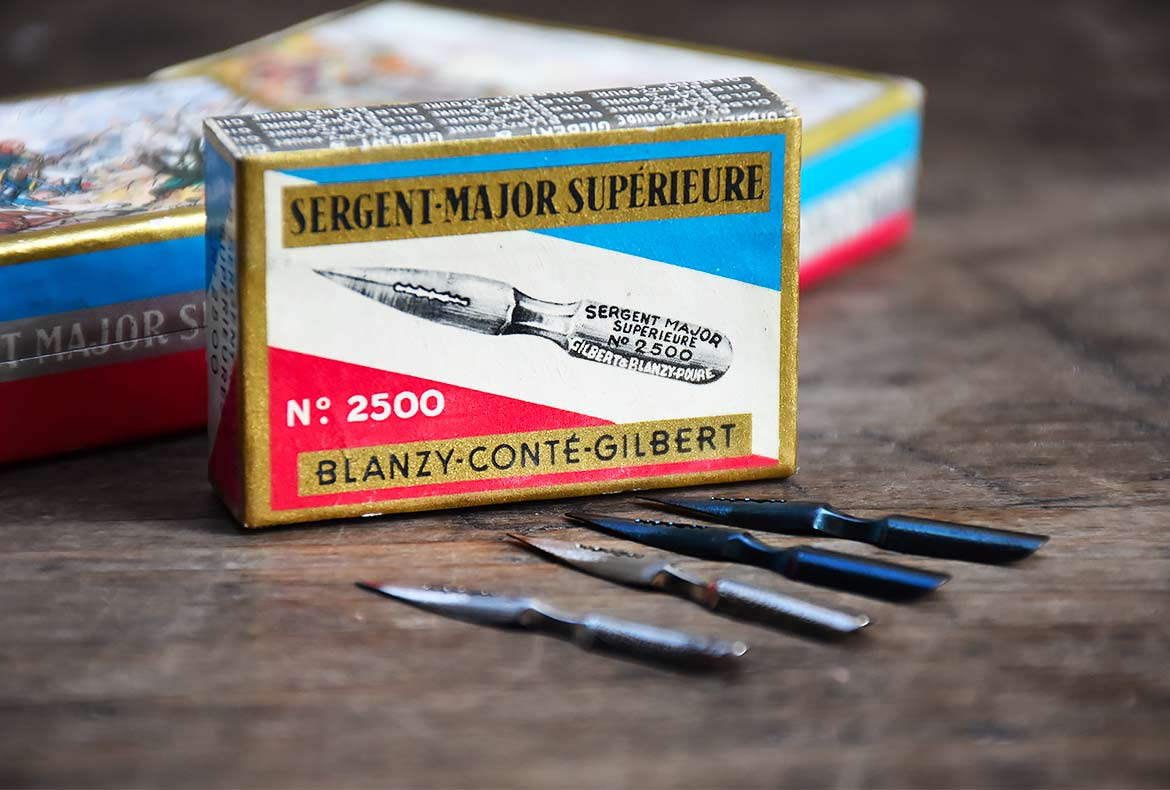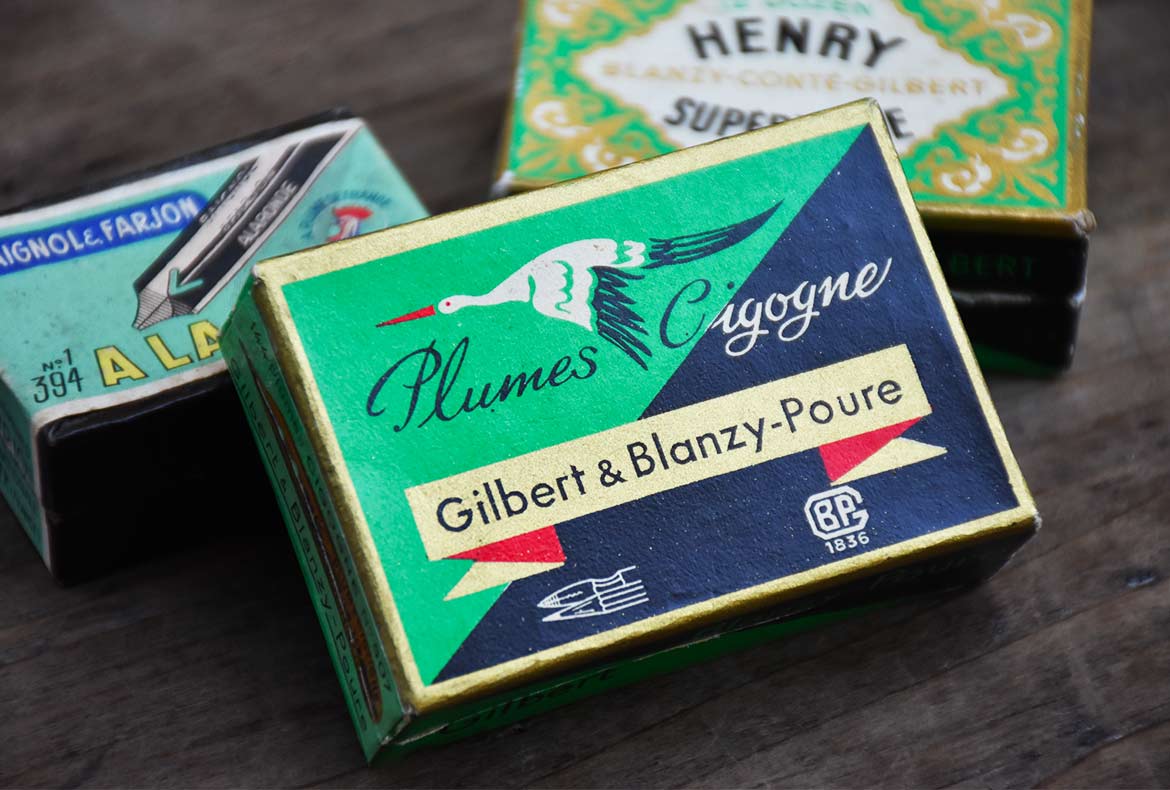Old nibs stories

In France, between 1846 and 1957, a hundred manufacturers produced around 5,000 models of metallic nibs. Baignol and Farjon, J-B Mallat, Blanzy-Pourre were the most important.
The French nibs industry developed in Boulogne-sur-Mer, in 1846 thanks to Pierre Blanzy and Eugène Poure and in 1856 with François Lebeau. The latter's two sons-in-law, Camille Baignol and Ferdinand Farjon, will take over with the company BAIGNOL & FARJON.
12 steps are necessary for the manufacture of steel nibs: cutting, drilling, marking, annealing, stamping, forming, tempering and annealing, cleaning, sharpening, cutting, polishing, varnishing.
Here are some stories of these famous feathers below.
 |
The Sergent-Major pen is best known for writing and drawing. Invented in 1881, it was used in French schools for learning to write at the end of the 19th century and until the 1970s. |
|
|
 |
 |
The musical nib to draw the five lines of a musical partition. |
|
The Baïonnette nib : the offset of the point reduced the amplitude of the writing movement. |
 |
 |
The Eiffel Tower nib is a collector's nib allowing fine writing. |
|
The Pinocchio is an original nib of the time, in particular because of its shape. |
 |
 |
The Index nib is a rigid hand-shaped nib. It has a semi-fine point and an ink reserve. |
|
La plume Henry pour l'écriture écolière très souple. |
 |
 |
The Henry nib for very flexible school writing. |
The Copyright nib for carbon paper mimeographs.
The Gauloise or departmental pen for school writing... And a lot more ....
 |
 |
 |
